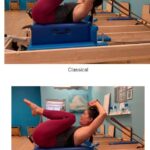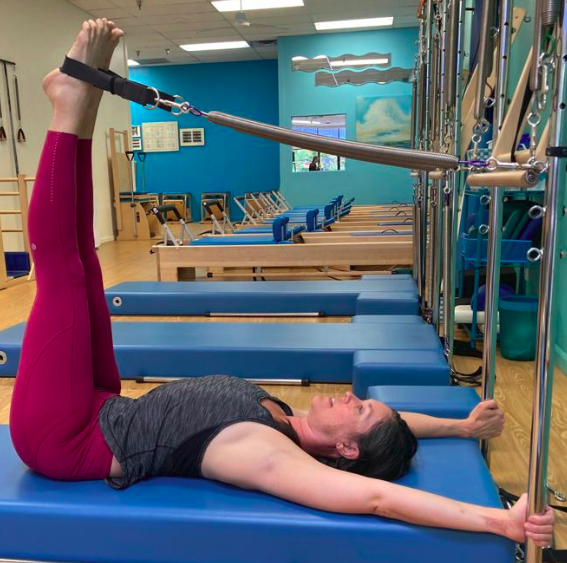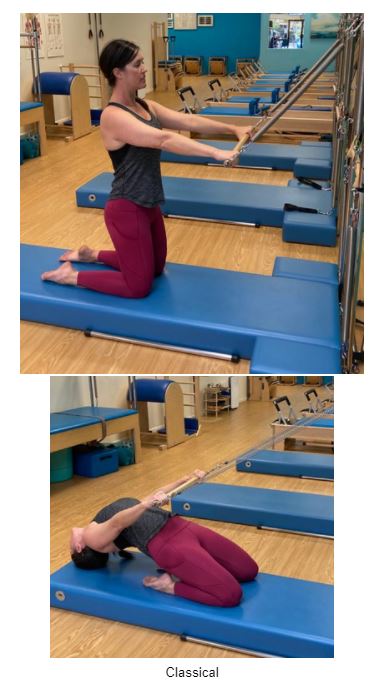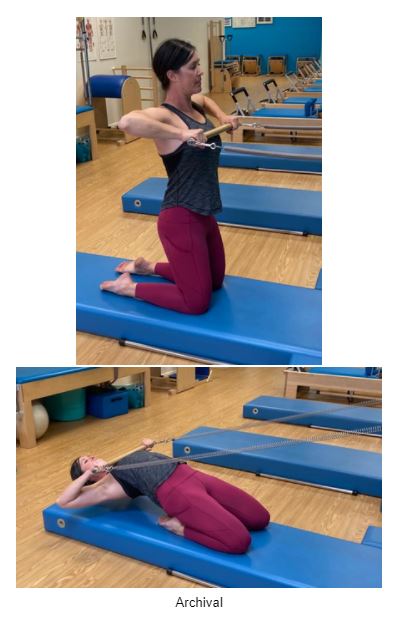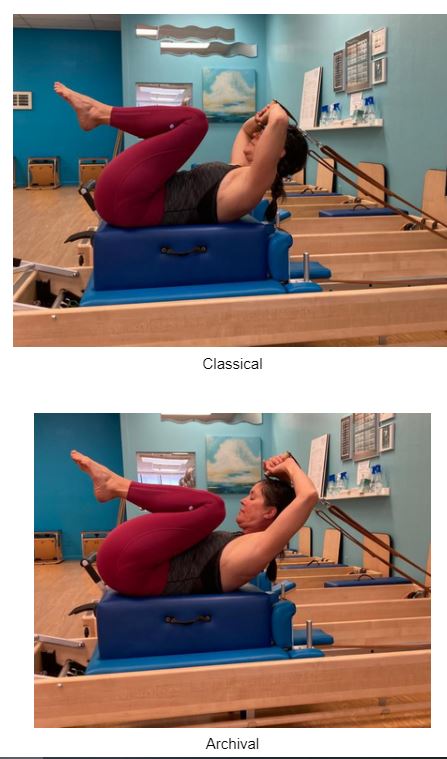Issue #351 – Wednesday, November 10, 2021
Lost in Translation
How the Pilates Method Has Changed Over the Years
by Amy Alpers
When my sister and I first opened our studio, The Pilates Center (in Boulder, CO, back in 1990), and launched our teacher training program, we had basically one answer to all the questions we were asked concerning the details of the Pilates method – and that answer was “Romana said.” Those were simpler times, for sure.
What is the order?
What springs are used?
What level is it?
What’s it called?
How many reps?
Are the hands like this or like that?
….
The only answers we had to give were “because that’s what Romana said” they were. Period. The end. And that lovely naivety lasted for a number of necessary years, while we developed ownership and some mastery of the material we’d been given. Only then could we see that we were ultimately going to have to learn to answer all these questions from our personal experience and knowledge, with a lot more depth and personal understanding of the “whys”.
Very luckily for us, in the mid-90’s we were given a lengthy video compilation of archival films made by Joseph Pilates in the early 1940s. We watched it many times back then, giggled a bit at its old-fashionedness and poor film quality, and originally decided it looked pretty similar to what we’d been taught by Romana in the late 80’s and early 90’s – back when she’d helped us create and establish our teacher training program. The truth was, we weren’t yet proficient enough ourselves to see and be ready to handle all the actual differences in the material – some subtle, some quite loud and surprising – as well as dozens of additional “new” exercises we’d never been taught. Where did they go? However, something about that film kept urging us to re-watch it. And after a few more years, when we were finally ready to really absorb more information, we took a deep dive into this amazing historical archive. Wow!!! We had no idea the world of Pilates that would open up for us.
The black and white rules that we’d been taught, and believed to be set in stone, weren’t really quite that solid. Hand positions, finger positions, placement of hands and feet, shoulder and hip range of motion, etc. were shown in many varieties. Even the actual choreography had variations. This was incredibly freeing. Now we knew that if some old rule didn’t work well for a client, there were viable Pilates options – and for good reasons.
For instance, the hand placement on the poles of the Cadillac (e.g., for leg springs) was always to be about 8 to 10 inches up from the mat. However, in the old films, the hands were often much lower, sometimes even below the mat level. In fact, many of the rules we had learned regarding arm and hand placement – such as “hands always in your periphery” – were not true in the old versions.
Clearly some limiting and somewhat fear-based biomechanical safety rules regarding shoulder and hip range of motion were added at some point. We’ll never know when or by whom. I suspect it was well after Mr. Pilates was gone. Consequently, the back of the shoulders and hips never get as strong as Mr. Pilates wanted, as his exercises are designed to create and ultimately require, and, most importantly, as the body needs for its long-term health. Instead, too much emphasis is placed on positioning of joints, versus building true upper body and hip strength and range. So, when doing Rollover/Jackknife/Corkscrew etc., the upper back, shoulders and hips often aren’t as open as they might be and hence are not powerful enough to support the whole body. This results in a lot of pressure on the spine that then gets labeled as “contraindicated” or “dangerous” for many people. However, with real muscle power developed, the spine is very safe and actually begins to get healthier. Once we started doing these exercises the “old-fashioned way” – with powerful, wide upper chests and backs, and strong hips – they began to actually make sense.
This is actually huge and completely paradigm shifting. The more we studied and worked with the film versions of exercises, the more it became very clear to us – this system of exercise was designed by a man, for men. It actually requires tremendous chest, shoulder, upper back, and even neck power and range to be done effectively and safely. However, since the system has been mainly carried on and used by women over the years, this upper body power and strength has been somewhat overlooked – somewhat due to fear on the teacher’s and client’s parts, but mostly due to the fact that the “archival” way was misunderstood, if not simply unknown.
One of the really valuable and unique aspects of the archival Cadillac exercises is that they truly help you to understand how to connect to the spring most effectively – to find the freedom that comes with relinquishing a certain level of control to the spring – and then moving with more flow and speed. The archival exercises and style of moving had more tempo, speed, rhythm, energy, dynamics, and emphasis. These qualities enable the muscles to release tension and develop long, strong range of motion. You have to take the “emergency brake” off your movement and let go more. This allows nature and the fundamental wisdom of the body to take control instead.
Here are a couple examples of some of what I’ve mentioned above: (several good ideas for pics, etc.)
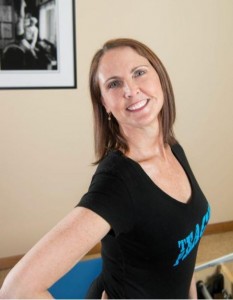
Amy Taylor Alpers co-founded The Pilates Center (TPC) and The Pilates Center Teacher Training Program (TPCTTP) over 20 years ago in Boulder, Colorado. When not traveling the world to teach both foundational and graduate level Pilates teacher education she remains part of the core faculty for TPCTTP, mentors advanced teachers, teaches classes and sees clients. In addition to teaching TPC sponsored workshops, Amy has presented numerous times at the Pilates Method Alliance Annual Meeting, Balanced Body’s Pilates on Tour and Passing the Torch. In 2013, Amy presented at the Shared Traditions Conference for Fletcher Pilates and will present at The Pilates Roundtable.
Amy was born in Youngstown, Ohio where she began classical ballet at age two.
She attended The Juilliard School for Dance, danced with the Garden State Ballet in New Jersey, and received a B.A. in Dance and a M.A. in Dance History from New York University. In addition, Amy taught ballet at various dance schools in New York City for ten years before launching her Pilates career.
Both Amy and her sister Rachel studied Pilates under the direct tutelage of Romana Kryzanowska at the original Pilates Studio in New York City. They received their Pilates teaching certificate from there in July of 1989. In 1990, after moving to Boulder, Colorado, Amy and Rachel founded The Pilates Center. The sisters then created and established The Pilates Center Teacher Training Program in 1991. The school has since expanded to include an Intermediate Program, Advanced Program, Bridge Program, Master’s Program, and a Mentorship Program. In addition, TPC now has “Licensed” and “Host” studios established all around the world.
Amy and her sister wrote The Everything Pilates Book, published in 2002. She was a founding board member of the PMA and sat on the board that created the PMA Certification Exam. Recently she has also had the honor of filming classes and workshops for online organizations such as Pilates Anytime and Pilates On Demand.
In 2011, Amy, her sister Rachel, and Ken Endelman of Balanced Body, developed CenterLine – a line of equipment designed for classical Pilates and based upon the specifications pioneered by Joseph Pilates.

